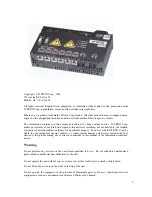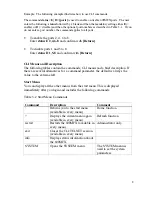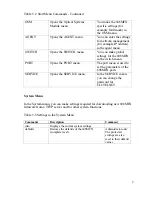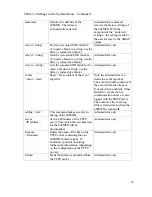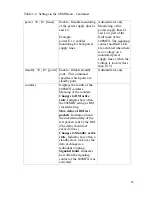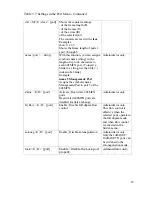
7
CLI Commands
This section explains the commands of the CLI, their functions and syntax.
The commands that are available depend on the access level; in other words, whether
you logged in as user or as administrator. Table 3–2 contains an overview of the
commands available for the administrator and user. The command–line interface
provides functions comparable with those available in Web–Based Management.
Symbols
Table 3–1 explains the symbols used with the CLI commands.
Symbol
Meaning
<>
Mandatory entry
|
Used to separate possible alternative input values in a command.
The factory default is shown on the extreme left. Only one of
the possible values can be selected.
Example:
aging <E|D>
: You must either enter
aging E
(aging enabled) or
aging D
(aging disabled),
E
is the default.
[ ]
Optional parameters. These options are used, for example, to be
able to address several port numbers at the same time. The
individual optional extensions are separated by commas; you
can address
groups using dashes.
Example:
If you enter the numbers 2,5- 8 in the [ports] field of a
command, this command applies to ports 2 and 5 to 8.
()
Description of the commands.
Fast Input
To enter a command quickly, write the first letter or letters and then press the
[Tab]
key. If
the required command is not shown, press the
[Tab]
key again.



